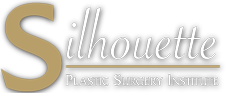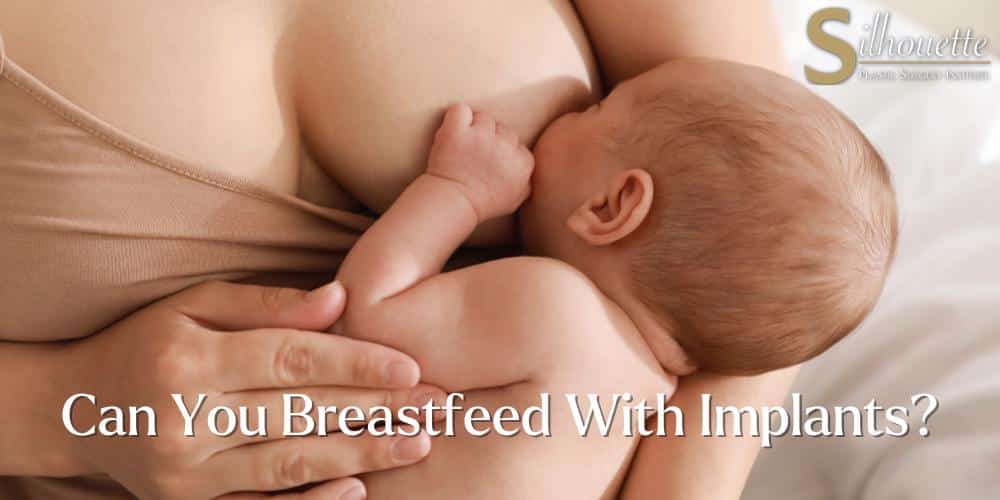Most plastic surgeons recommend their patients to wait on breast surgery until they’re sure they’re done having children and breastfeeding. Not only can pregnancy and breastfeeding change the aesthetic results of breast surgery, but it can potentially make it harder for women to exclusively breastfeed. So, if you’re wondering, “can you breastfeed with implants?” The answer is yes, but women with breast implants may struggle to produce enough breast milk to feed their babies. Below, Dr. Daneshmand breaks down everything you need to know about the link between cosmetic breast implants and breastfeeding.
If you’re looking to improve the appearance of your breasts, then our breast surgeon at Silhouette Plastic Surgery Institute can help. Dr. Daneshmand has more than 30 years of experience in performing breast augmentation surgery, breast reduction surgery, breast lift surgery, and so much more. Call 949-359-8397 to schedule an appointment at our clinic today.
Can You Breastfeed With Implants?
Yes, most women can breastfeed successfully with both silicone and saline breast implants. However, women with cosmetic breast implants may struggle to produce enough breast milk for their newborn baby. So these mothers may not be able to do exclusive breastfeeding. Instead, they may have to supplement with infant formula or donor human milk to meet their baby’s nutrition needs.
Mothers with silicone breast implants and saline breast implants may have experience issues other than just lactation insufficiency. They may also experience inhibited letdown from nerve damage, sore nipples, engorged breasts, and an increased risk of mastitis.
Breast Surgery Factors That Affect Milk Production
There are many breast implantation factors that can affect a woman’s ability to produce milk, including type of incision, implant location, nerve damage, reason for surgery, and when the surgery was performed.
Type of Incision
Plastic surgeons create different types of incisions in order to insert silicone or saline implants. Some plastic surgeons create an incision around the areola which can result in damage to milk ducts, nerves, and glandular tissue, all which play important roles in breastfeeding.
Meanwhile, some plastic surgeons make incisions underneath the breast – where the breast connects with the chest wall – and in the armpit. These types of incisions lead to far less damage to milk ducts, nerves, and glandular tissue, and therefore, mothers with these types of incisions should be able to produce milk without a problem.
If you’re considering breast augmentation surgery, be sure to tell your plastic surgeon if you have any plans to become pregnant or exclusively breastfeed in the near future. There are steps they can take to best prevent reduced milk production in the future.
Implant Location
The placement of saline and silicone breast implants can also affect whether or not a mother has a full milk supply after birth. Breast implants can be placed above or below the pectoral muscle depending on many factors such as how much natural breast tissue a woman has before surgery, physical activity levels, implant size, and aesthetic goals.
If implants are placed above the pectoral muscle (subglandular breast implants), they can place increased pressure on milk glands which can lead to reduced milk production. If you inform your plastic surgeon that you’re planning on becoming pregnant and breastfeeding in the near future, they will most likely recommend placing the implants below the pectoral muscle (submuscular implants).
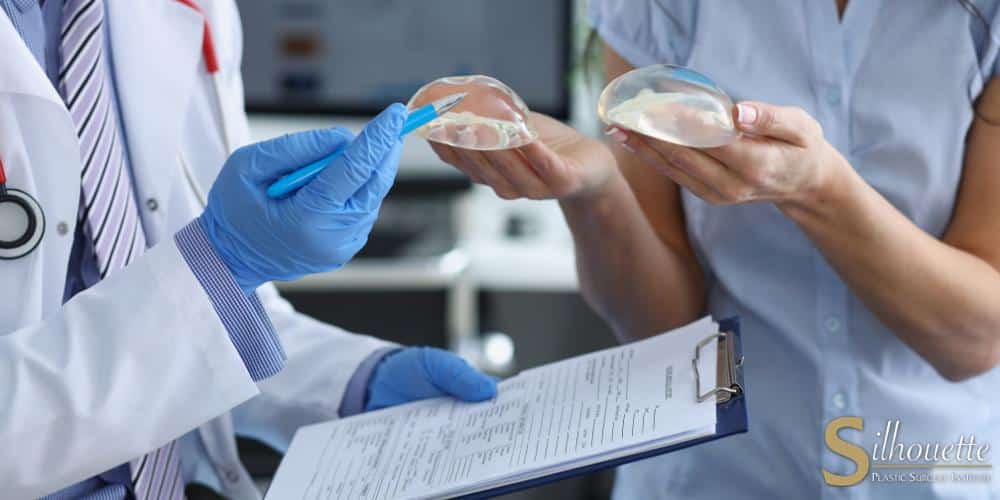
Nerve Damage
If your plastic surgeon inserts your saline or silicone implants through an areola incision, you’ll have a higher risk of suffering nerve damage which can lead to insufficient lactation later down the road when you’re ready to breastfeed.
Another potential issue that can lead to nerve damage is scar tissue. It’s normal for the body to form a thin layer of scar tissue around implants after breast augmentation procedures. Too much scar tissue can lead to a complication called capsular contracture. But even just a thin layer of scar tissue around the implant can lead to damaged nerves and milk ducts, which can make it difficult to produce enough breast milk for a newborn baby.
Reason for Surgery
Some health and developmental conditions can warrant breast augmentation surgery, such as hypoplastic breasts and breast cancer.
Hypoplastic breasts are basically underdeveloped breasts. People with hypoplastic breasts have insufficient glandular tissue, which will negatively affect milk production regardless of if they had breast surgery.
Patients with breast cancer often need mastectomies in which surgeons remove some or all breast tissue needed for milk production. Later, these patients may undergo reconstructive surgery to have a normal breast size and appearance. If the breast cancer only affected one breast (and therefore the patient only needed surgery for one breast), then a patient may be able to breastfeed successfully with the other breast. Otherwise, breast cancer patients with newborns will have to rely on infant formula or donor breast milk.
When the Surgery Was Performed
If you have had breast surgery in the past, don’t panic. Any nerve or milk duct damage that you may have suffered can heal and improve over time; the human body is very resilient this way. Women with breast implants that are several years old may have no problem with lactation sufficiency.
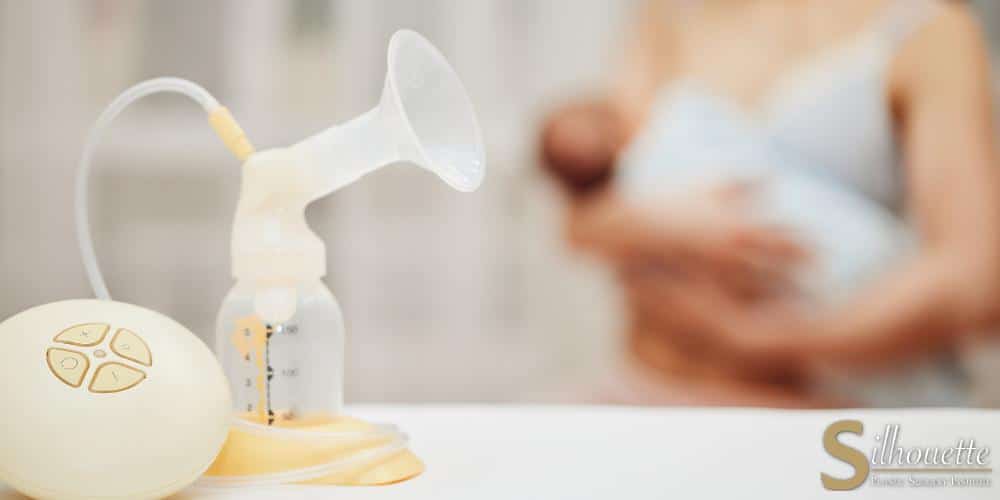
Will Breastfeeding Change the Results of Breast Augmentation?
Most women undergo breast augmentation surgery to improve the shape and size of their breasts for the sake of self-confidence. So the possibility of your breast augmentation results changing through pregnancy and breastfeeding is a valid concern to have.
While the shape and size of your breasts may change due to pregnancy and breastfeeding, the implants themselves will not. So there is no need to worry about your baby potentially damaging the implants while breastfeeding. Also, there’s no need to worry that the pressure from your milk supply will damage your implants.
Mothers with silicone breast implants or saline breast implants also frequently worry that their implants will contribute to breast ptosis, or breast sagging, after exclusive breastfeeding. Hormonal and weight changes throughout pregnancy and postpartum are to blame for most breast changes, including breast ptosis. Breast implants in and of themselves will not cause significant sagging.
If you’re concerned about potential changes in your breast appearance after pregnancy and breastfeeding, schedule your breast augmentation after you’re done having children. Or, if you’ve already had a breast augmentation before you became pregnant, be sure to discuss breast revision surgery or breast implant removal.
Can Breast Implants Harm Babies?
Saline breast implants are filled with salt water, so if they happened to leak or pop during breastfeeding, the body would just absorb the salt water. Saline implants would not cause any harm to the baby in this scenario.
Silicone gel implants, on the other hand, cause more concern for new and expectant mothers. They worry that silicone can somehow get into their milk supply and cause harm to their new baby. While this is a possibility, this study indicates that this is a very rare occurrence. In fact, this study states that cow’s milk actually contains more of the element silicon than human milk from mothers with silicone breast implants.
So, rest assured that your milk supply will be safe and nutritious for your baby, regardless of if you have saline or silicone implants.
How to Increase Milk Supply After Breast Surgery
If you have implants and you’re struggling to produce enough breast milk for your baby, there are a few things you can try to increase your milk production.
- Lactation Consultant: Breastfeeding is basically a science; it’s much harder than people think it is. That’s why working with a lactation consultant after birth can help almost any new mom – regardless of if you have breast implants or not. A lactation consultant can help new moms with almost any problem: sensitive and sore nipples, the best breastfeeding position, latching problems, and more.
- Breastfeed Often: One of the best ways to increase your milk supply is the breastfeed as often as you can, preferably every 2 to 4 hours. Breastfeeding this often is definitely exhausting and even painful, but if exclusive breastfeeding is your goal, then this is the best way to increase supply. The more you breastfeed, the more signals your body will send to increase breast milk supply.
- Communicate With Your Baby’s Doctor: If you are a new mom with breast implants, be sure to tell your baby’s doctor. They can help you overcome lactation insufficiency and make sure that your baby’s nutrition is leading to appropriate growth and weight gain.
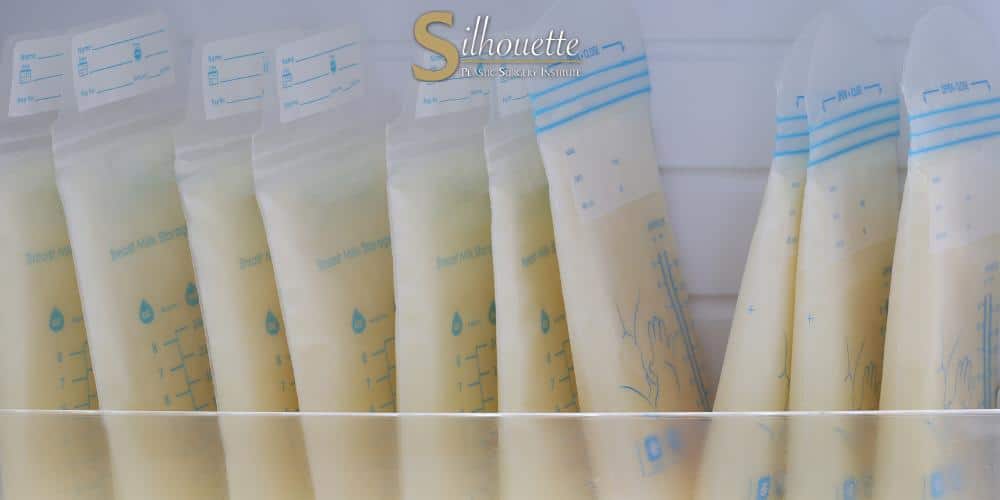
Call Silhouette Plastic Surgery Institute Today
Dr. Daneshmand at Silhouette Plastic Surgery Institute has more than 30 years of experience in performing all sorts of plastic surgery, including breast surgery. He offers every type of breast surgery to help you achieve your aesthetic goals: breast augmentation, breast reduction, breast lift, breast reconstructive surgery, and so much more. Call 949-359-8397 to schedule an appointment at our clinic today.
